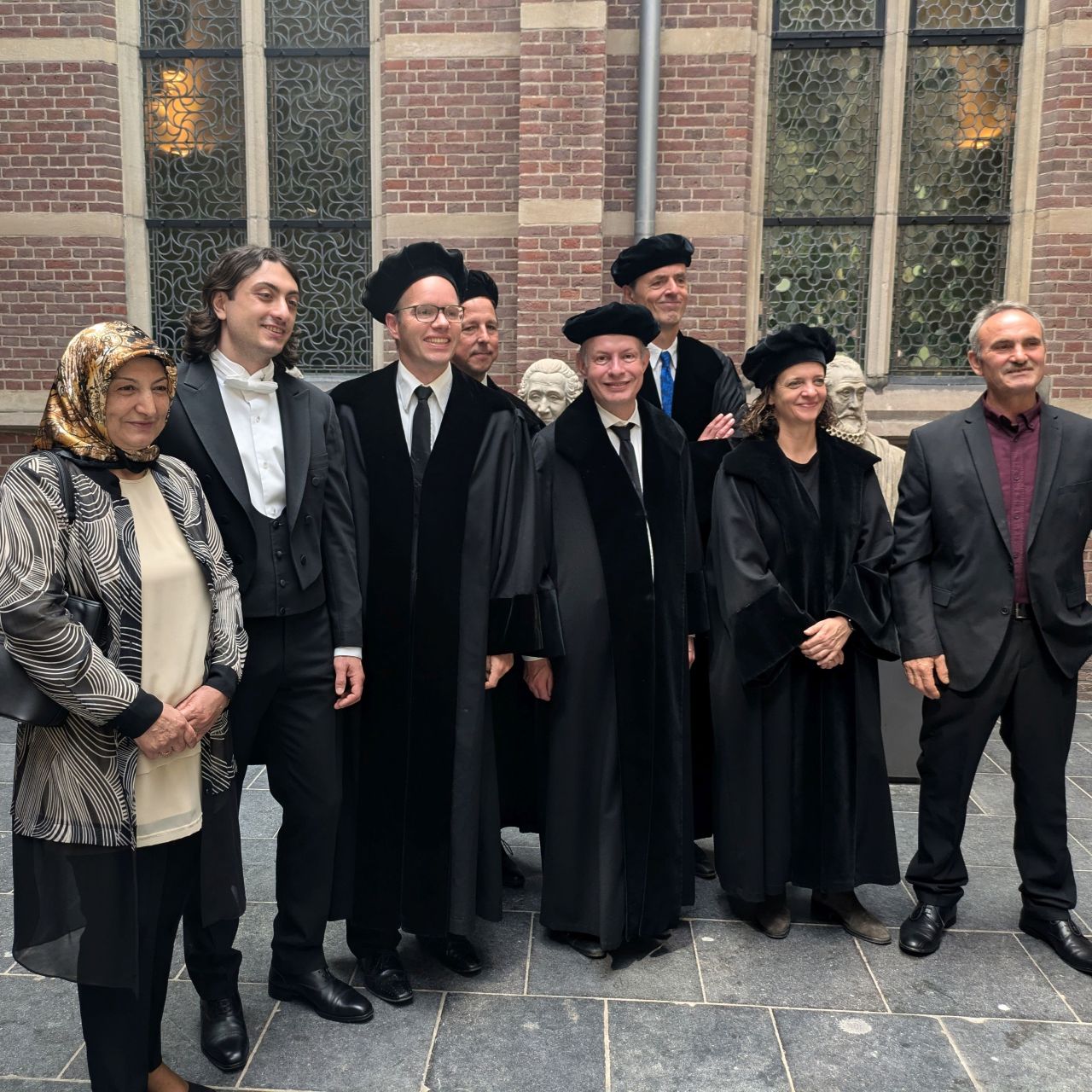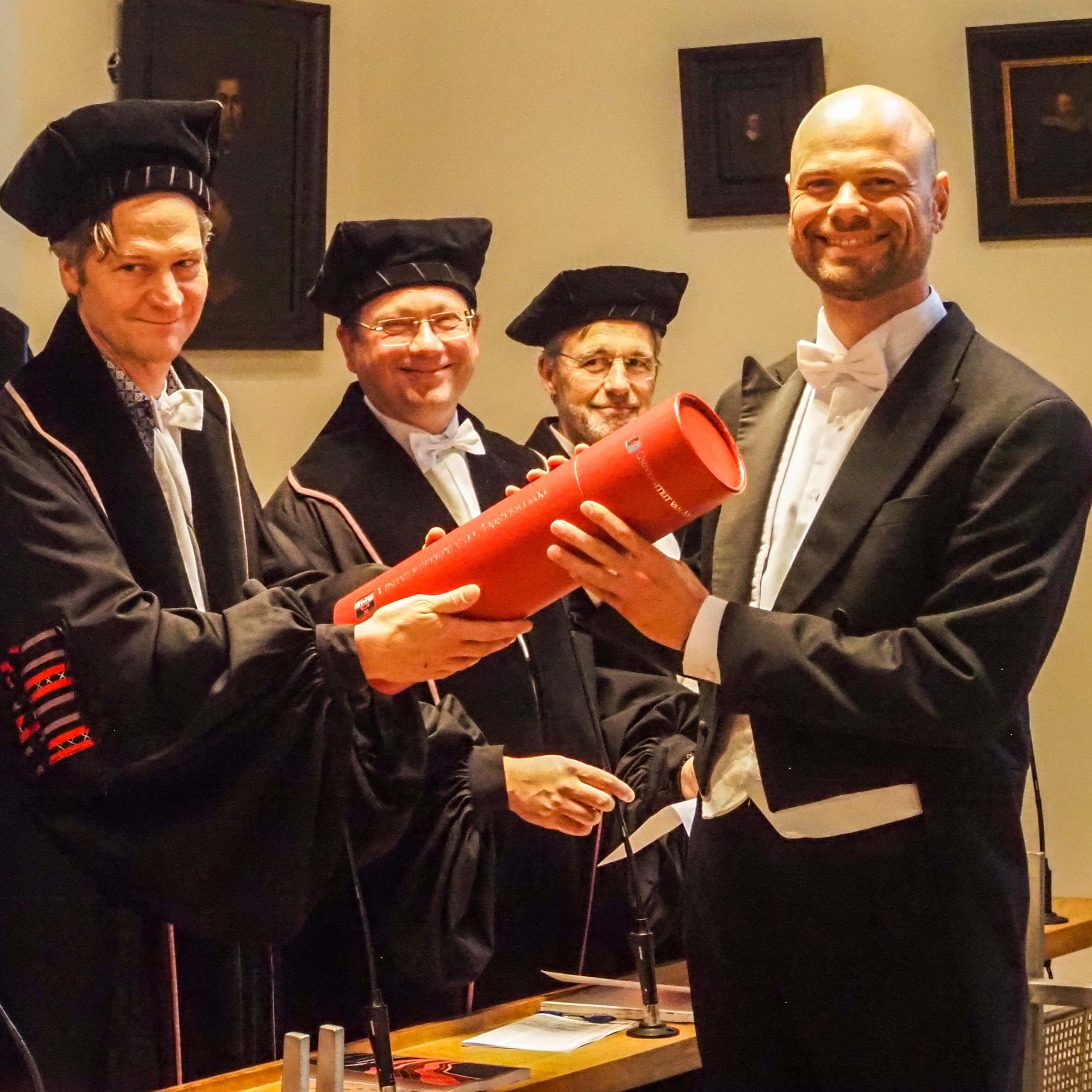Spring brings many Doctorate Celebrations
Burak Demirbas – Stress-induced protein dynamics and growth arrest in C. elegans during development – May 16th

Burak did his doctoral research in the group of Jeroen van Zon. He studied the dynamics of a protein called DAF-16/FOXO, which, in the worm C. elegans, is associated with growth inhibition in response to stress. Burak: “We think that pulses of this protein stop growth when there is stress—such as lack of food. Then, the protein enters the cell, and once the stress is removed, it leaves. I was able to observe this correlation,” he explains.
Burak left AMOLF in 2024 to begin a postdoctoral position in the group of Meike Wortel at the University of Amsterdam, Faculty of Science. He is currently working on a computational theory that predicts evolution.
Lennard Kwakernaak – Counting Metamaterials – May 28th

Can a block of rubber count to ten? This was one of the questions Lennard Kwakernaak explored during four years of doctoral research at Leiden University and AMOLF, in the group of Martin van Hecke. In his thesis he answers many questions about the behavior of mechanical metamaterials. These are materials whose properties are defined not just by their molecular makeup but also by their structure.
Lennard investigated how a rubber block could be used to process information, in a way similar to how a computer operates. A small bar that buckles to the left or right can represent a binary bit: a 1 or a 0. “It wasn’t easy to design the structure to behave exactly the way we wanted,” says Lennard. “Counting is the simplest form of computation we could think of, so it made sense as a starting point.”
Would you like to try to make rubber count? Lennard has made instructions in the article “Beam Counter: a Rubber Block That Counts!”.
Nelson de Gaay Fortman – Amplifying Plasmonic Metasurfaces – June 5th

As part of his PhD work in the group of Femius Koenderink, Nelson built a laser setup to study flat nanostructured materials known as metasurfaces that capture and manipulate light.
One of the most important findings of Nelson’s research was the observation of spontaneous symmetry breaking in metasurface lasers:
Nelson: “We saw that perfectly symmetric systems — composed of nanostructures — could suddenly ‘choose’ one direction in which to emit light. By capturing each laser pulse in detail and designing the symmetry landscape ourselves, we created a new platform to explore one of nature’s most fundamental phenomena at the nanoscale: how symmetric conditions can still lead to asymmetric outcomes.


